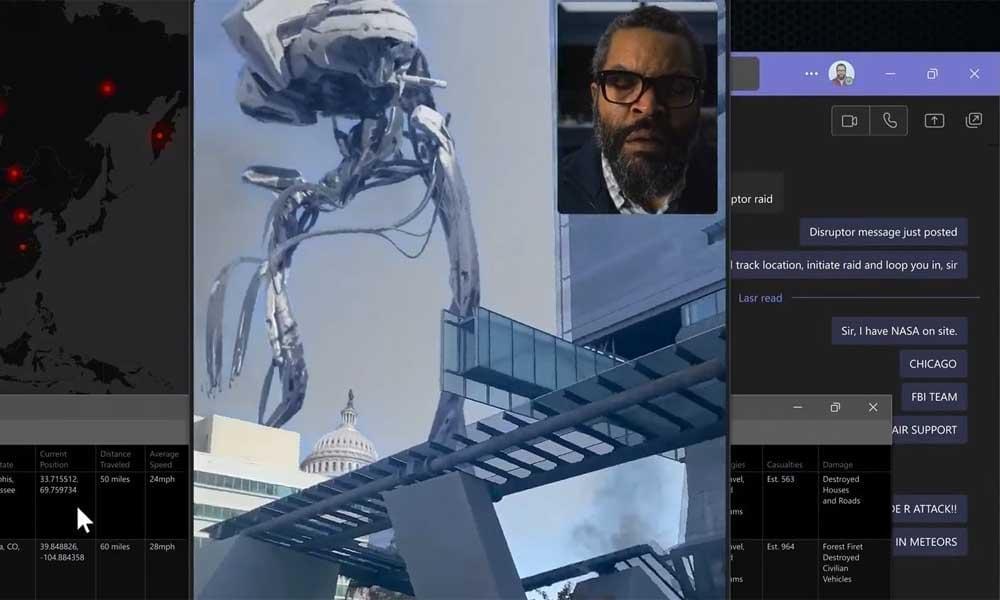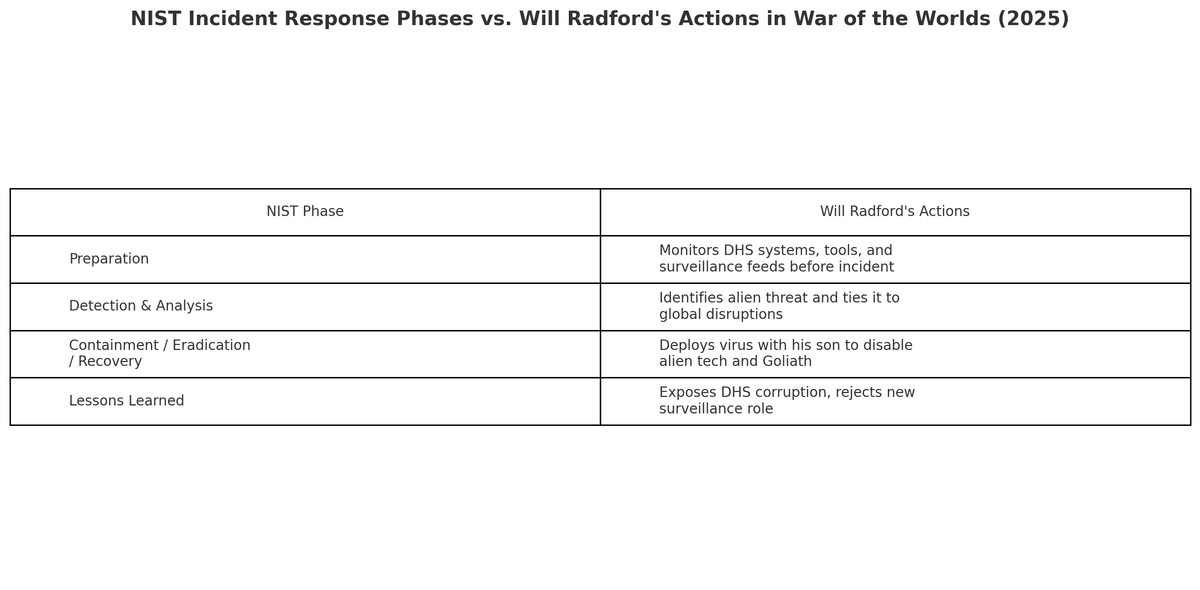
When Ice Cube signed on to play Will Radford in War of the Worlds (2025), most viewers expected explosions, alien invasions, and a heavy dose of Cube’s signature grit. What many didn’t expect was a surprisingly accurate (if Hollywood-enhanced) look at how a cybersecurity role can morph into full-scale incident response when the stakes go cosmic.
Yes, in the film, Radford is labeled a Computer Security Analyst. But if you know the NIST Incident Response Lifecycle, you’ll recognize that his character’s duties stretch far beyond monitoring dashboards. In fact, they land squarely in Incident Response Analyst—and even Incident Response Manager—territory.
The Setup: Titles vs. Responsibilities in IT
In the real world, titles don’t always tell the full story.
- Computer Security Analyst – Primarily handles monitoring, detection, and analysis.
- Incident Response Analyst – Actively engages in containment, eradication, and recovery during a live incident.
Will Radford starts the movie as the former but ends up doing the latter—Hollywood’s way of condensing an entire Security Operations Center into one man.
Mapping Will Radford to the NIST Incident Response Lifecycle
The National Institute of Standards and Technology (NIST) breaks down effective incident response into four major phases (with sub-steps in between). Here’s how Radford’s arc mirrors them:
Preparation
Radford works at the Department of Homeland Security, monitoring a massive surveillance program called Goliath. He has access to advanced tools, feeds, and intel before the aliens ever arrive.
Real-world parallel: Having infrastructure, tools, and access in place before an incident hits is the backbone of readiness.
Detection & Analysis
Strange “meteors” land on Earth, disrupting data centers. Radford notices unusual patterns, connects the dots to an alien threat, and discovers his own children are hackers tied to a resistance movement.
Containment, Eradication & Recovery
Hollywood compresses these into one adrenaline-fueled sprint:
- Radford teams up with his hacker son to develop a virus.
- They infiltrate DHS systems and disable both the alien tech and Goliath.
- They prevent military escalation and neutralize the immediate threat.
Real-world parallel: In practice, containment, eradication, and recovery are distinct—and involve multiple teams. But the essence is the same: stop the spread, remove the threat, restore operations.
Lessons Learned
After the dust settles, Radford exposes DHS corruption, rejects a new surveillance leadership role, and delivers the line, “Now, I’m watching you.”
Real-world parallel: Post-incident reviews are critical for improving response processes, closing vulnerabilities, and making ethical calls about technology use.
Why This Matters for IT People
For those in the trenches of IT and cybersecurity, Radford’s arc is a reminder that:
- Incident response is dynamic—you may start in analysis but be called into active mitigation.
- Preparation is key—his ability to act came from having the right tools and access in place.
- Leadership under pressure matters just as much as technical skills.
Why This Matters for Movie Goers
For the non-IT audience, the takeaway is subtler:
- Cybersecurity isn’t just “hacking keyboards in a dark room”—it’s about making decisions in moments of crisis.
- Titles like “Analyst” don’t mean someone isn’t capable of leading in high-stakes situations.
- Real-world cyber incidents—though slower and less explosive—can have stakes just as high for our safety, privacy, and infrastructure.
Ice Cube’s Will Radford might be fictional, but the job he performs—transitioning from passive monitoring to active crisis commander—is very real for professionals in security operations centers worldwide.
So the next time you watch a cyber-savvy character go from analyst to action hero, remember: somewhere, in a fluorescent-lit room, a real incident responder might be doing the same—just without the alien mothership overhead.
